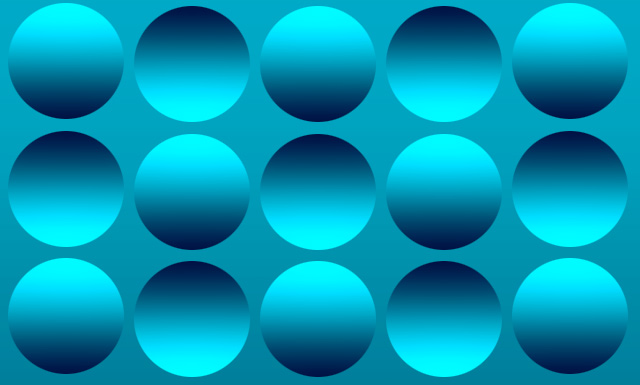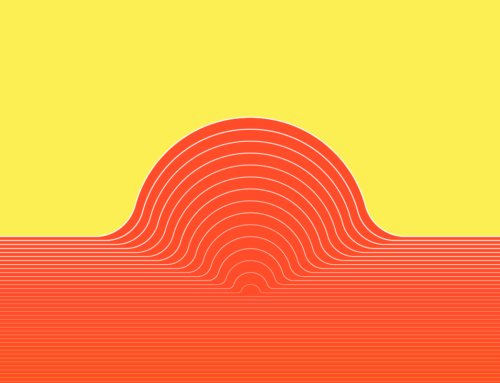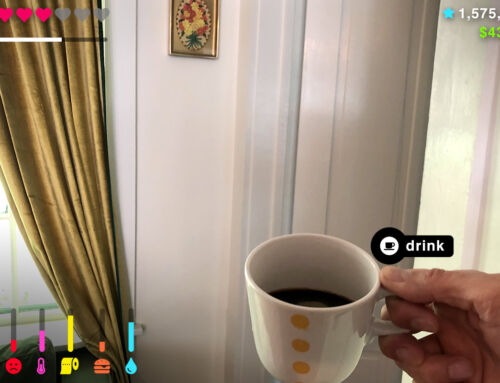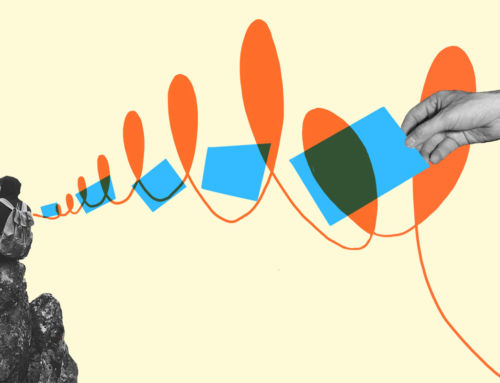Some of the circles appear convex, others appear concave. But why?
If you’ve ever taken a close look at the buttons you click on your computer screen, you might have noticed that there’s something about them that just seems “clicky.” The secret to making things pop off the screen, (as anyone who’s ever designed a button can tell you) is to cast some virtual light on it so the top is brighter than the bottom. This gives the illusion that the element is actually catching the light because it’s so thick and poppy.
Interface designers are painfully aware that users are basically lazy – but in this case, that laziness has been exploited to our advantage. Human brains like to take shortcuts and jump to conclusions whenever possible. One of these shortcuts is to tell us “if something reflects more light from its top edge than it does from its bottom edge – then its definitely popping out at you.” It’s actually a pretty safe assumption, since, from the time we were apes, the main source of light has been the sun (which is above you, as you’ve probably noticed.) And if the thing popping out at you was a hungry lion instead of say – the back button on a web browser, you might be glad your brain cut some corners to buy you a few milliseconds of running time.
In his book The Telltale Brain, my new hero V.S. Ramachandran discusses this phenomenon and points out that your brain is even lazier than you might have bothered to notice. When it informs you “that thing is coming at you,” it isn’t basing the assumption on its knowledge of the sun’s location (above you,) it’s actually just basing it on where the top of your head is. That’s usually a safe bet, since the top of your head is often pointed towards the sky, but try turning your head to the side and looking at the illustration above. If you’ve got a normal brain, the shapes don’t seem to pop anymore.
For the longest time, the light source in the typical system interface was located in the upper left, at the 10:00 position. You’d paint a little white highlight on the top edge and left edge of a button and, simple as that, the illusion of depth was achieved.
But about ten years ago, with the advent of Mac OSX, there was a dramatic, cosmic shift that few people seemed to notice. The light moved overhead – to the high noon position. Suddenly all the highlights and shadows had shifted! Did Steve Jobs just decide to move the sun without telling anyone? (I guess if you can forge deals with the RIAA and AT&T, then moving the sun is pretty easy.)

What does it all mean? Do we assume that it’s somehow getting later in cyberspace? First it was 10:00, now it’s noon? Should we expect another shift? Will the light start to come from the 2:00 position, then 6:00? Is this some sort of doomsday clock we need to be watching? Is it counting down to when the computers finally break free of our screens and start to steal our parking spaces??
Whatever it means, just remember, my friends: The light shines not from above, but from within.












Leave A Comment